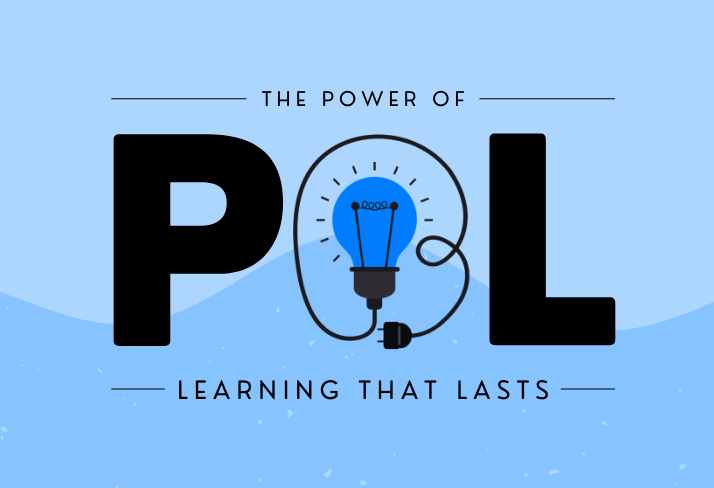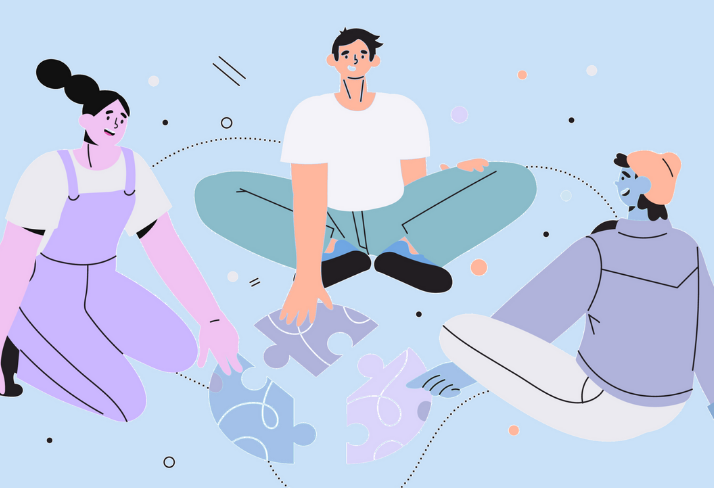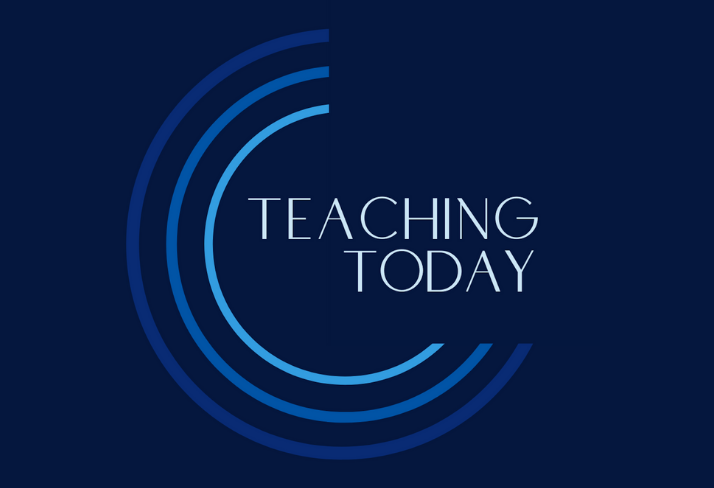|
One school's success with unpacking the COVID crisis through project-based learning.
Educators are our superheroes, not because they can swoop in and solve all the big problems, but because they create spaces for students to explore and discuss real issues and pose real solutions. When we offer students the opportunity to engage deeply in meaningful, relevant problems, we can build student confidence and offer them agency over potentially frightening issues.
When our society seems rife with complex problems, it’s the perfect time to introduce problem-based projects. But before we look at an example of a problem-based project, let’s look to the roots of project-based learning to deepen our understanding of its principles. Problem-based learning can be linked to R. C. Snyder’s “Hope Theory” which promotes agency and hope — crucial concepts, especially for our students during a time of societal upheaval. The positive psychology behind “Hope Theory” is: “simply put, hopeful thought reflects the belief that one can find pathways to desired goals and become motivated to use those pathways.” Of course, this speaks to one of the goals of problem-based learning for students, which is to develop, practice, and apply key skills to real-world issues. When we get more ambitious, these problem-based projects may even expand across disciplines and become interdisciplinary projects! Elementary school teachers often do a great job of working across subjects in their own classrooms, but for middle and high school, where subjects are generally taught discreetly by separate expert teachers, implementing projects across disciplines may seem more daunting. It can sound complicated, but as our classrooms increasingly shift to online learning spaces, classroom walls and clearly delineated class periods are no longer barriers, offering us opportunities to work more easily with our colleagues across classrooms and disciplines.
Implementing a schoolwide interdisciplinary project
As an instructional coach and teacher, I understand just how complicated planning for blended learning can be; however, I have been inspired by how educators have used the blended and remote learning spaces as an opportunity to innovate, develop, and implement projects. As we moved into remote learning during the early phases of the COVID-19 crisis, I was working as an instructional coach with the Academy for Computer Engineering and Innovation 2 (AECI2) as it started up its first/founding year as a high school in the Bronx. While the energetic, innovative teachers and principal always gave their all to the students, nobody envisioned that by the end of the school year, we would actually collaborate remotely to create and implement the Living History Project — a remote, school-wide interdisciplinary project that culminated in a call to action letter writing campaign and a community-wide presentation. As the initial months of online learning continued and COVID-19 began to seriously impact our community, we realized that our students needed productive ways to synthesize and make sense of what it meant to be living history. Recently, I met with two of AECI2’s lead teachers, who initiated and coordinated this interdisciplinary project — Chris Mastrocola, an AECI2 English teacher and the school’s technology expert, and Joyce Brandon, the 9th grade math teacher. They offered some valuable insights and tips into successfully developing and implementing interdisciplinary projects, which can be a helpful starting point for developing your own project. Please note that these steps do not need to be followed in order. Different starting points work better for different contexts and communities.
Collaboration & communication are key
To coordinate all pieces of an interdisciplinary project, Chris suggests establishing regular planning meetings, and making sure that one teacher from each discipline joins an interdisciplinary planning team to meet and work on the project. As our project progressed, weekly meetings focused on different topics relevant to each stage of the project. Regular meetings are not only important when first starting a project, but help keep it moving at each stage of the process. Based on our experiences, here are Chris’s suggestions:
Choosing a problem-based topic
How do we choose topics for projects? Do teachers or students drive that decision? Or, do project topics naturally reveal themselves? I’ve found that the most productive projects are those that arise as authentically as possible, driven by a current, complex societal problem. We generally know a topic is worth investigating when our students show an interest in it and are posing genuine questions about the issue. At AECI2, the challenges created by the COVID-19 pandemic and the necessity for coherent local and federal governmental responses were the problems that naturally drove and inspired our project. Students were concerned about the impact of COVID-19 on their own lives and the lives of others. Living in quarantine and practicing social distancing, they were raising questions with teachers about the impact of the disease, how to manage it societally, and also how to cure it. This pointed us to a natural focus for our project. Joyce reminds us that when choosing a topic to explore, we need to be aware of how the students may experience it. For example, at the time when the students started the Living History Project about the COVID-19 pandemic, they were living in a community with the highest numbers of cases and deaths from the disease in the United States. Joyce points out that when we are living among the numbers, we need to be sensitive to the trauma or hopelessness that students may be feeling. Moreover, when our students are members of a community that is disproportionately impacted by an issue, or has historically been marginalized, we want to make sure that the chosen topic or project isn't accentuating students’ sense of hopelessness or powerlessness. Rather, through research and knowledge-building and a call to action approach, we believe in the power of project-based learning as a way to offer students a sense of agency and empowerment.
Defining essential questions
Collectively, we developed essential questions about the problem of COVID-19 to drive our project. Grant Wiggins and Jay McTighe, the authors of Understanding by Design explain that essential questions are “not answerable with finality in a brief sentence.” Their aim is to stimulate thought, to provoke inquiry, and spark more questions. They are “broad, full of transfer possibilities” and “cause genuine and relevant inquiry into the big ideas and core content.” Essential questions can help the teacher maintain a focus on the goals of the unit or project, and also stimulate inquiry, discovery, and meaningful connections for students. Here are the Living History Project’s problem and essential questions that we developed: Essential question:
Guiding questions:
Project assignment prompt:
Student responses to each of these recommendations were informed by their explorations in social studies, math and science classes, and written in their ELA classes.
Defining project goals
A major goal of this project was for students to synthesize and apply their research and learning from math, science, and social studies into a coherent set of recommendations about how to address the COVID-19 crisis. We also wanted students to feel empowered and have some agency over an overwhelming situation that was affecting their own community and lives. As you work to establish your own project goals, consider which key standards will be assessed by the project. In this case, we knew that literacy across science, social studies, English, and even math all incorporate argument writing and skills. Each subject teacher identified the key standards addressed in the project.
Backwards planning to teach key skills
Chris and Joyce both attest to the importance of breaking the final assessment product into parts in order to create a plan and teach all necessary skills. Joyce quickly realized that in her Algebra classes, students needed to really be taught to read and analyze data in charts and graphs, and at the same time, they were learning these skills with a heightened sense of importance as they applied their findings to their recommendations for addressing the COVID crisis. Joyce also cautions that percentages are hard to understand — students, and many adults, can't really conceptualize such large numbers, such as the number of people testing positive for COVID, so she began to use comparisons and analogies that were more accessible to students. The English teachers at AECI2 recognized that students could use some instruction on letter writing, as well as time to revise and edit their letters. So, we decided that the students would organize, revise, and edit their final letters in their English lessons as a final phase of the project. In social studies, Brett Pastore reviewed a range of documents and images with students, highlighting epidemics throughout the ages, including the Black Plague and the 1918 influenza epidemic. From analysis of these documents, students made connections to the COVID-19 pandemic and drew conclusions about how to address the current situation. And in her Living Environment class, Samantha Cunningham developed a series of lessons for students to learn to analyze data about the health impacts of COVID-19. Finally, the project was handed to the school’s technology teacher who designed lessons to support students in the final phase of the project, as they formatted and uploaded their projects to Padlet.
Backwards planning for each subject
This project expanded across the disciplines as, together, teachers identified how students would complete components of the project in their classes as they worked toward their final product — the call to action letter. Teachers identified the key skills and steps for their subject areas, and developed a sequence of lessons through backwards planning from the final product. To incorporate the students’ investigations and learnings about the pandemic from across disciplines, we decided to ask each student to contribute a paragraph with specific recommendations, using data and evidence from each of their subjects — Algebra, Living Environment, and Global History. They would then craft and revise their letters in their English classes, applying all the components of argument writing that they had studied. Students also made connections between subjects — for example, in math, students referenced what they know about pandemics throughout history to make sense of questions such as do these numbers make sense?, and how are these data related to the data from earlier epidemics?
Outline a final assessment product
Our final product was a call to action letter, addressed to a politician and offering three recommendations on how to address the COVID-19 crisis. The final presentation was presented on Padlet. All students published their final project with the following components:
Plan for presentation/publication of the product
For this project, we relied on platforms that AECI2 teachers were already using — Google Docs for teachers’ planning, and Google Classroom for interacting with students. Building on familiar systems that are already in use is helpful for any project, especially one with this level of interdisciplinary collaboration. To present their work to teachers and peers, students first created a presentation using Google Slides, with a slide for each of the following components:
Students also included artwork and excerpts from their journal entries about the pandemic, and uploaded their final presentations to Padlet, where it could be shared with the school community for feedback and comments. At AECI2, we decided to use Padlet as our publication platform, since each student could easily add their own post to a school-wide wall, and other students could easily comment on it. With more time, we could have expanded this opportunity and supported students in filming their presentations using Screencast-o-matic or something similar, which would allow for more connection between members of the community.
Benefits of problem-based projects
Here are some of the benefits of problem-based projects that we encountered with our partners at AECI2:
Problems in society can drive authentic projects, providing students with relevant topics that can build their confidence, allowing them to feel they have more agency over potentially frightening issues, and offering them an opportunity to pose solutions to real issues that are impacting their communities.
Our experiences with planning and implementing AECI2’s Living History Project not only showed us the benefits of problem-based learning, but how exciting it is to work across disciplines. We were able to increase interdisciplinary collaboration and work free from traditional educational barriers, such as time and space, as all teaching and learning was happening remotely. In our new educational spheres, the constraints of in-person teaching no longer exist in the same way, providing a gateway for exciting and engaging work with our students. The opportunities are endless. |
|
The Center for Professional Education of Teachers (CPET) at Teachers College, Columbia University is committed to making excellent and equitable education accessible worldwide. CPET unites theory and practice to promote transformational change. We design innovative projects, cultivate sustainable partnerships, and conduct research through direct and online services to youth and educators. Grounded in adult learning theories, our six core principles structure our customized approach and expand the capacities of educators around the world.
|
ABOUT US
525 West 120th Street, Box 182 New York, NY 10027 416 Zankel Ph: (212) 678-3161 [email protected] Our Team Career Opportunities |
RESOURCES
Professional Articles Ready-to-Use Resources Teaching Today Podcast Upcoming PD Opportunities |
COACHING SERVICES
Custom Coaching Global Learning Alliance Literacy Unbound New Teacher Network Student Press Initiative |

























